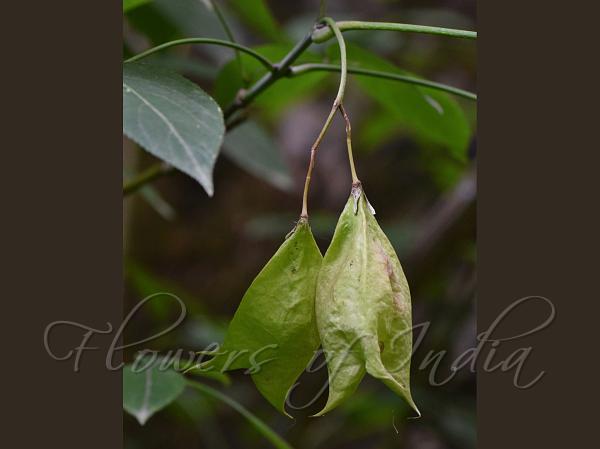|
| Himalayan Bladdernut |
|

|

| File size | 337249 |
| Original date | 6/18/22 10:09 PM |
| Resolution | x |
| Flash | Flash did not fire |
| Focal length | 90.0mm |
| Exposure time | 1/125s |
| Aperture | 13.0 |
| Focus Distance | |
| Metering Mode | $meteringMode |
| Camera make | NIKON CORPORATION |
| Camera model | NIKON D5300 |
| Sensor type |
|
|
|
|
Photo: |
Botanical name: Staphylea emodi Family: Staphyleaceae (Bladdernut family)
Himalayan Bladdernut is a deciduous shrub, with young
shoots arising from branch-end buds with persistent scales. Leaves are
opposite; leaflets 7-15 cm long, 3-7 cm broad, ovate to elliptic ovate,
minutely toothed, tapering, lower surface pale and usually
velvet-hairy; lateral leaflets more or less stalkless; the at
branch-ends leaflet leaflet-stalk 2.5-5 cm long; common leaf-stalk up
to 16 cm long; stipules 2, oblong lanceshaped to spoon-shaped, 1.5-2 cm
long, deciduous; stipels 2, linear, 2-4 mm long, deciduous. Panicles
5-7 cm long, flowering when shoots are young. Flowers are white, 1-1.5
cm long, flower-stalk slightly longer, up to 2.5 cm long in fruit;
bracts 4-7 mm long, linear, deciduous. Sepals oblong lanceshaped, 7-8
mm long, persistent. Petals more or less spoon-shaped, about the size
of the sepals or slightly longer, persistent. Stamens persistent;
filaments about 7 mm long, lower half velvet-hairy; anthers 2 mm long.
Styles 3, coherent, about 8 mm long, hairless; stigmas capitate.
Capsule is 6-8 cm long, inflated and membranous, splitting
longitudinally downwards from the tip. Seeds are few, nearly spherical,
7.5 mm broad, more or less compressed, shiny yellowish brown. Himalayan
Bladdernut is found in Himalayas from 2000-3000 m. Flowering:
April-May.
| Identification credit: Ashutosh Sharma | Photographed in Kullu district, Himachal Pradesh. |
• Is this flower misidentified? If yes,